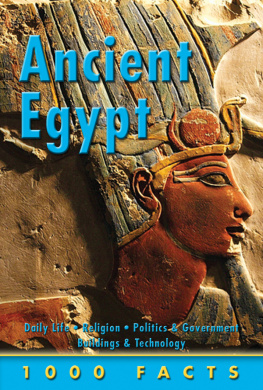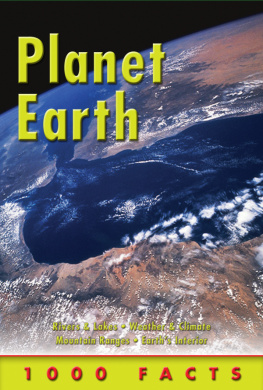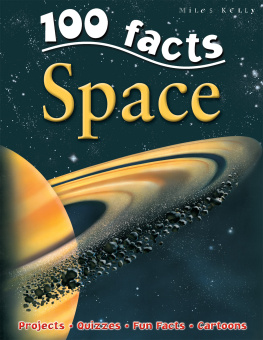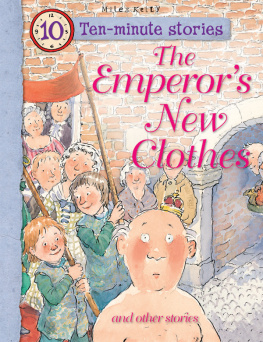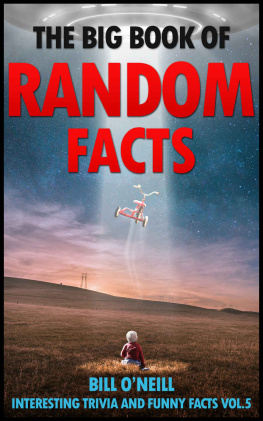
This material was first published as hardback in 2006 by Bardfield Press Bardfield Press is an imprint of Miles Kelly Publishing Ltd, Hardings Barn, Bardfield End Green, Thaxted, Essex, CM6 3PX.
This edition published in 2007 by Miles Kelly Publishing Ltd
Copyright 2010 Miles Kelly Publishing Ltd
Editorial Director: Belinda Gallagher
Art Director: Jo Brewer
Editor: Rosalind McGuire
Assistant Editor: Lucy Dowling
Designers: Stephan Davis, Tom Slemmings
Picture Researcher: Laura Faulder
Production Manager: Elizabeth Brunwin
Reprographics: Anthony Cambray, Liberty Newton
All rights reserved. No part of this publication may be reproduced, stored in a retrieval system or transferred by any other means, electronic, mechanical, photocopying, recording or otherwise, without the prior permission of the copyright holder.
British Library Cataloguing-in-Publication Data
A catalogue record for this book is available from the British Library
www.mileskelly.net
info@mileskelly.net


- Egypt lies in the extreme north-east of Africa. The river Nile flows right through the country and into the Mediterranean Sea through the Delta, making a long, fertile valley.
- People have lived in the area since the Stone Age, and modern humans arrived about 60,000 years ago.
- Around 8000 BC , the climate of Northern Africa began to change. The landscape became more arid, and the climate less hospitable. In contrast, the Nile River Valley was an area abundant in food and water.
- The Khartoum people arrived in Egypt around 6000 BC . They were the first to domesticate cattle and grow crops in the Nile Valley. Some of their spectacular rock-carvings can be seen in the Nubian Museum, Aswan.
- Around 5000 BC , a series of civilizations began to develop across the world, centred on major river valleys the Indus in India, the Tigris-Euphrates in the Middle East, the Yellow River in China and the Nile in Egypt.
- The first settlers in ancient Egypt had probably migrated from other parts of Africa such as Libya and Nubia, and also from Palestine and Syria. They would have lived in simple mud huts on the banks of the Nile.
- These settlers were joined 2000 years later by people from escaping from the arid conditions of modern south Iraq. They would also have been attracted by the fertile soils, regular water supply and plentiful wildlife that were features of ancient Egypt.
- The period of time from the founding of these settlements until the beginning of the unification of Upper and Lower Egypt in 3100 BC is known as the Predynastic era.
- Historians are not sure how the end of the Predynastic era came about. It may have been caused by an invasion from Asia, but it is more likely that internal factors caused a gradual unification of Egypt.




- Over 90 percent of Egypt is scorching desert, so it is sometimes called the red land. Yet it also contains the greatest river on Earth the Nile.
- The Nile is the longest river in the world over 6400 km in length. It flows from the highlands of Central Africa to the Mediterranean Sea. This mighty river provided the basis for the great civilization of ancient Egypt.
- The Nile results from three great rivers coming together the White Nile, the Atbara and the Blue Nile. The White and Blue Niles merge in the Sudan, near Khartoum.
- Flood season in Egypt lasts from mid July to the end of September. When the floodwater retreats (between November and March) farmers begin to sow their crops, ready to harvest between April and June.
- The first Egyptian farmers waited for the Nile to flood to nourish their crops, but by 5000 BC they had started to devise ways to control the great river. They dug canals to channel the floodwater to distant fields.
- The first reservoir was built at Fayum, about 60 km southwest of Cairo. The Egyptians surrounded the plot with about 30 km of dykes and reduced a huge saltwater lake into the freshwater Lake Moeris.
- The Egyptians lived on the banks of the river Nile or by canals springing out from it. This land was the best and most fertile in the country, and was called Kemet the black land.
- The farming year began when the Nile flooded, washing mineral-rich silt deposits onto the land. This usually led to a bountiful summer harvest.
- The height of the Nile flood was crucial to the survival of crops. The amount of water was monitered using nilometers stone staircases that led down into the river. The speed at which the water covered the steps told the Egyptians how fast and intense the flood was likely to be.
- Even when the floods receded , the Nile provided the people of Egypt with a life-saving source of water in the otherwise hot and arid landscape, without which the Egyptians empire would have crumbled.



- Lower Egypt occupied the northern part of the country, where the Nile divides into the Delta that flows into the Mediterranean Sea. Only 160 km in length, Lower Egypt was many times wider than Upper Egypt.
- The Nile Delta dominated Lower Egypt, where the land was fertile and marshy. Lower Egypt had a milder temperature than Upper Egypt, and it also had more rain.
- Archaeologists do not know as much about the Predynastic history of Lower Egypt as they do about Upper Egypt. It is usually divided into five periods by historians.
- The time before written history in Egypt is divided into five periods by archaeologists. Each period is named after a site from which tools, pottery and other objects have been excavated.
- Lower Egypt was known as To-Mehu at the time of the pharaohs. It was divided into 20 areas called nomes.
- The king of Lower Egypt wore a red crown, or deshret. It was a tall, box-shaped centrepiece, on top of which protruded a dramatic looking curlicue.
- Lower Egypt was represented by the goddess Wadjyt. Usually shown as a cobra, she could also appear as a lion-headed woman or even as a mongoose!
- Lower Egypt was heavily influenced by Palestine and Syria. Pottery from these areas, as well as artefacts from Sumeria (lower Euphrates) have been found in the Delta.

